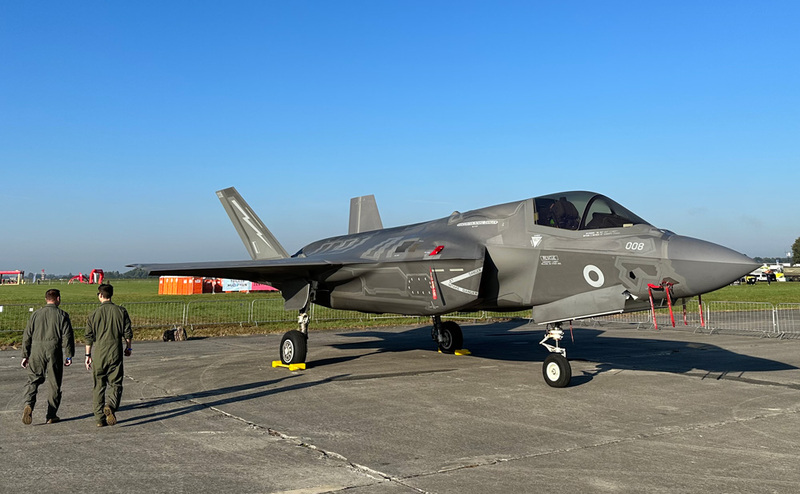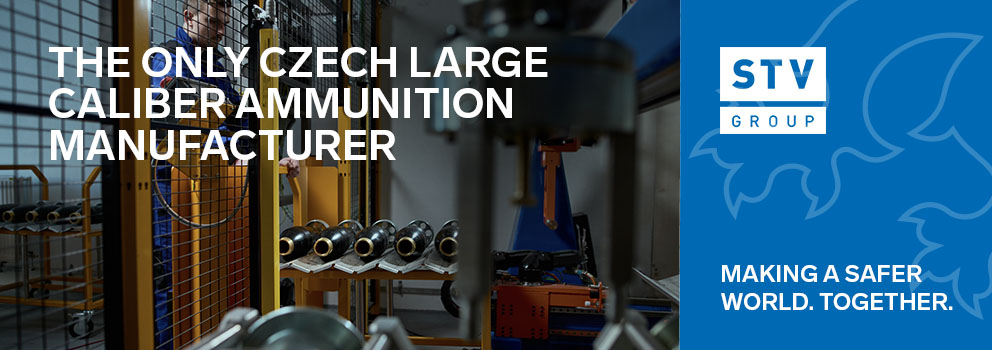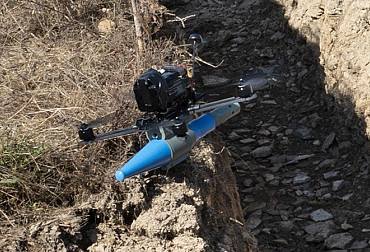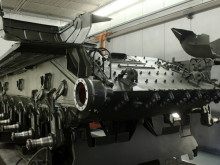The draft budget of the Ministry of Defence: almost 50% goes to investments. Strategic projects continue
The draft state budget of the Czech Republic for 2024, or rather Chapter 307 - Ministry of Defence, which was recently discussed by the Chamber of Deputies Committee on Defence at its last meeting, will probably undergo changes in the form of amendments during the next reading on the floor of the Chamber of Deputies. In addition to providing insight into the future development of the Army's capabilities, the submitted material also offers an opportunity to recapitulate the status of the Army's strategic and significant acquisitions and modernisation projects. Let us recall the most important ones.
The expenditure of programme financing is expected to reach 47.95% of the total budget of the Ministry of Defence next year, which at first sight clearly expresses the desire and need to invest in the long-neglected armaments, equipment and real estate of our armed forces. The years-long internal debt will certainly not be repaid in one year or even in the term of office of one minister or minister. In any case, the commitment to spend 2% of GNI on defence, which is finally being fulfilled, creates realistic conditions for this, at least in the medium or long term. This includes the fact that approximately one tenth of a percentage point will be spent on defence not by the Ministry of Defence but by a number of other ministries.
The aforementioned nearly 50% allocated to programme funding is, in absolute terms, the sum of 72.494 billion that goes to investment. In the draft budget, we find an explanation of the purpose and context of this expenditure, or references to specific projects broken down by individual expenditure headings. While we are still awaiting an updated version of the 2030 CSDP, this material already offers clear contours of the force development priorities. For the Ground Forces development area, explicit mention is made of the continued purchase of MINIMI machine guns for the KOVS and KOVVŠ armoured vehicles, the gradual replacement of the BVP-2 with the CV90 type, the gradual delivery of CZ BREN 2 assault rifles, the acquisition of personal, rescue and cargo parachutes for airborne troops, and the acquisition of standby tactical ammunition.
In the artillery, the process of acquiring self-propelled howitzers of 155 mm NATO calibre is mentioned first, while for the engineer troops the intention is to acquire wheeled loaders and ballistic protection for individuals. As part of the increase in the capabilities of the chemical troops, it is planned to acquire CBRN-COLPRO collective protection against weapons of mass destruction and means for decontamination of large aerial equipment.
In the field of the Air Force, the acquisition of night vision aids for the crews of JAS-39 Gripen C/D and L-159 aircraft and the modernisation of the cabins of L-159 fighters to allow flying in low visibility and at night are mentioned. For the helicopter aviation, the upgrade of Mi-17/171Š helicopters and the continued delivery of new UH-1Y Venom and AH-1Z Viper helicopters. In the field of transport aviation, the modernisation of CASA C-295 aircraft is mentioned, while there is no mention of the recently announced intention to acquire Embraer C-390 aircraft. In air defence, the introduction of SHORAD kits continues.
In total, 45 materially significant and financially demanding actions were included in the draft state budget and medium-term outlook, which are expected to be financed by means of individually assessed expenditure by a state organisational unit. For 2024, the total amount is CZK 26.62 billion. Within the 45 projects, we will stop at the most important ones:
Tracked infantry fighting vehicle and its modifications - purchase
Apart from the acquisition of F-35 Lightning II supersonic aircraft, where the contract is expected to be signed with the US government in the first half of 2024, the acquisition of 246 CV90 tracked BVP with accessories is the most followed and also the most significant order of the Ministry of Defence so far in terms of volume.

"Delivery of 246 tracked combat vehicles in 7 modifications (for commanders, for men, reconnaissance, artillery observation, engineer, recovery and medical), 29 workshop vehicles in 3 modifications (for maintenance, for tracked equipment and for special armament), 14 sets of driving simulators, shooting, crew and combat simulators, including teaching aids and a universal computer lab, electronic parts catalogues, spare parts kits, workshop kits and a basic stock of school training ammunition is the content of a tripartite acquisition contract concluded with a foreign contractor in May 2023. "
The project is expected to cost 11.15 billion in 2024, 6.7 billion a year later, and 2.22 billion in 2026, and may cost up to 70.67 billion crowns in total. This is approximately 11 billion more than the amount announced when the contract was signed - a provision resulting from the inflation clause signed.
According to the Ministry of Defence, the army is to receive the first units "as early as 2026" (the Czech Republic's original commitment to NATO speaks of a heavy brigade task force by 1 January 2026).
NATO cannon - purchase
NATO cannon - nThe contract for the French company NEXTER's Caesar self-propelled guns on Czech Tatra 8x8 chassis was signed in September 2021. The original order was for 52 units, but based on an amendment from December 2022, another 10 units of this equipment will be procured. The draft budget correctly states the total amount as 62 units, but as Pavel Růžička, Vice-Chairman of the Committee on Defence, pointed out, the '52 units' remained in the text: 'The acquisition of 52 155 mm self-propelled guns is being carried out under the terms of the purchase contract concluded in September 2021 with a foreign supplier. The aim of the action is to rearm the fire units of the 13th Artillery Regiment to the allied standardised calibre for the protection of its own territory and its deployment within task forces in foreign operations."

A total of CZK 10.3 billion will be spent, of which CZK 2.06 billion will be spent next year, CZK 1.03 billion in 2025 and CZK 1.4 billion in 2026. The works are to be delivered by 2026.
SHORAD anti-aircraft set - purchase
In October 2021, a contract was signed for the procurement of four SPYDER anti-aircraft batteries from the Israeli company Rafael. They are to be delivered by 2026, when they will replace the outdated 2K12 KUB sets.
"The aim of the action is to ensure functional and effective protection of the Czech Republic's airspace within the National Air Defence Reinforcement System (NaPoSy), to provide protection of task groups intended to support brigade and battalion task group troops as well as NATO Response Forces (NRF), and to protect air bases deployed on the territory of the Czech Republic."
A total of CZK 13.7 billion is to be spent on this project, of which CZK 1.32 billion is to be spent next year, CZK 4.26 billion in 2025 and CZK 2.48 billion in 2026. Similar to the delivery of the Caesar guns, the SPYDER sets are subject to intensive industrial cooperation and involvement of Czech companies, with the SPYDERs also using Czech Tatra chassis, and the integration of the system into the armament of the Czech Armed Forces is to be carried out by the Pardubice-based company Retia.
Multi-purpose helicopters - purchase
The first two AH-1Z Viper helicopters were officially handed over to the Czech Air Force in July this year. In total, 12 aircraft (eight UH-1Y Venom multirole and four Vipers) will be delivered under a contract signed with the US government in December 2019. The Czech Army will thus have a total of 10 UH-1Y Venom multirole helicopters and an equal number of AH-1Z Viper attack helicopters.

"The aim of the acquisition of 12 multi-purpose helicopters, including related equipment for operation, maintenance, supporting information systems, special equipment is to ensure further development of the helicopter aviation capabilities for the performance of specified tasks and to reduce dependence on Russian equipment."
The 12 helicopters with accessories will cost a total of 17.6 billion crowns, of which 1.16 billion crowns remain to be paid next year. Further costs will be required to upgrade and transport the eight donated machines.
Rental of JAS 39 C/D Gripen supersonic aircraft
In connection with the aforementioned purchase of the 5th generation aircraft, the terms of the Gripen lease have been discussed again. According to the current contract in force, these are based on 1.7 billion per year until 2027, and the total amount will be 18.24 billion (as of 2015). The Ministry of Defence is currently negotiating to extend the lease of the Swedish aircraft until 2035, i.e. until the new F-35s should have reached full operational capability and the Gripens can be retired. Between 2028 and 2035, the annual cost of leasing the existing Gripens is expected to be close to CZK 3 billion.

"The action is implemented in the years 2016-2027 in the form of the lease of 14 JAS 39 C/D Gripen supersonic aircraft on the basis of the Agreement on the lease of JAS 39 C/D Gripen aircraft, support systems and related services concluded between the Czech Republic - Ministry of Defence and the Kingdom of Sweden, with the aim of ensuring the protection of the airspace of the Czech Republic by its own forces."
What will be included in the updated Army of the Czech Republic 2030 Construction Concept?
The update of the Army of the Czech Republic 2030 Construction Concept is currently being prepared and will be presented to the Defence Committee by the end of the year and subsequently submitted to the Government. It is the next step in the gradual update of strategic documents, which began with the approval of the new Security Strategy of the Czech Republic. The KVAČR will be based on the approved Defence Strategy of the Czech Republic 2023, which emphasises the continuation of building capabilities on an all-military basis, but does not mention any specific technology apart from the new-generation multi-purpose supersonic aircraft.
Logically, the defence strategy, following the experience of ongoing conflicts, speaks, for example, of strengthening the capabilities of the ground air defence system. Thus, perhaps an increase in the number of SPYDER batteries can be expected. Alternatively, in the updated KVAČR we will finally see mobile air defence assets for effective defence of the army's manoeuvre elements, including their effective protection against drones.
The question is how self-propelled mortars will be treated in the updated KVACR. Indeed, the Army has already defined the need to acquire 62 self-propelled mortars of 120 mm calibre capable of indirect, semi-direct and direct fire in 2018. It is likely that the choice will eventually fall on a wheeled platform with an 8x8 chassis arrangement (Pandur II 8x8 CZ, Patria AMV 8x8, etc.).

We will also soon see whether the salvo rocket launchers that were retired from the Czech Armed Forces in 2010 will appear in the updated concept of the Czech Armed Forces. Especially in Ukraine, it was clearly shown that this equipment still plays a very important role, even on the modern battlefield.
It will also be interesting to address the issue of tactical drones, standby ammunition, but also, for example, light assault vehicles and a number of other projects that failed to be implemented in the past period, were overlooked or were not envisaged by the army at all. We will undoubtedly have the answers very soon.




















